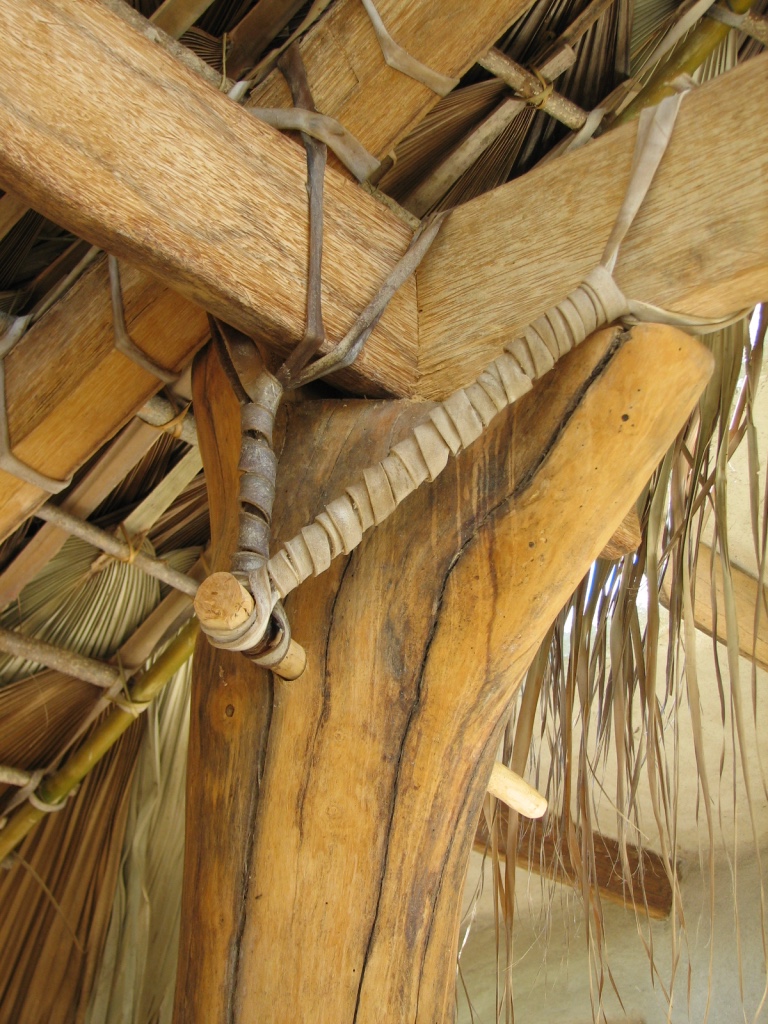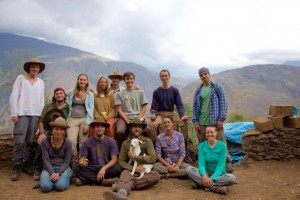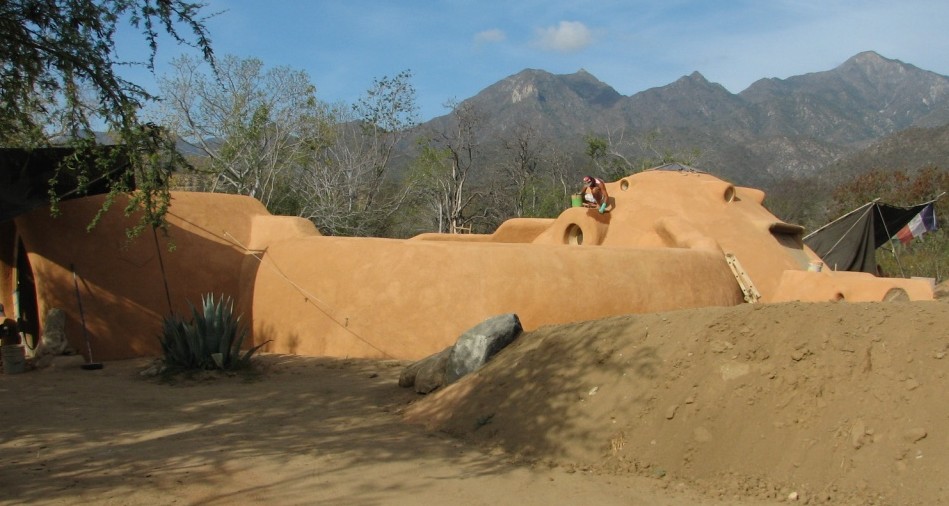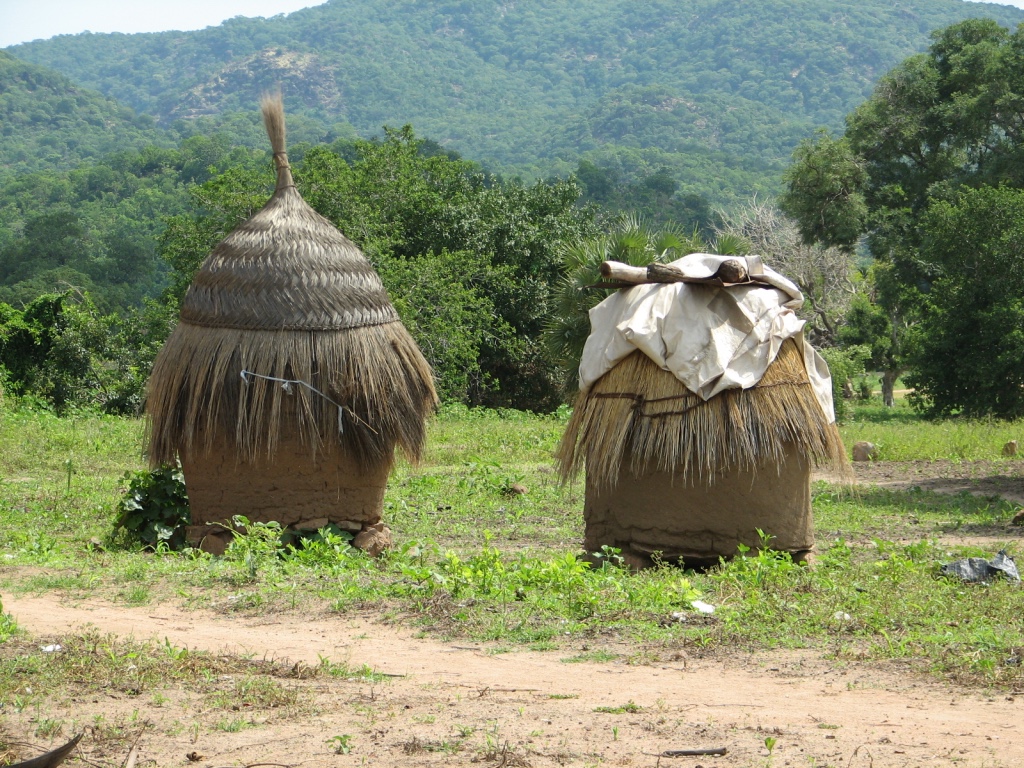Intelligent Resilience: A Byproduct of a Permaculture Design Course?
posted by Andrew Jones on January 15th, 2016
It appears that we’re currently living in the midst of fundamental change – experiencing the reality living in ‘interesting times’. As signs of stress continue to emerge in relation to fundamental ecological, financial, and social systems – the question of appropriate individual and global ‘preparedness’ becomes relevant. Having had the opportunity to work with people responding to humanitarian crisis during the 90’s and first decade of the millennium in an international aid context in Iraq, Papua New Guinea, former Yugoslav Republic of Macedonia, Indonesia and a slew of other locations since in a permaculture/sustainable design context I often find myself reflecting on the question of how to be prepared for interesting times.
At a time when government agencies are reportedly utilizing a 36-hour from apparent normalcy to chaos planning scenarios (i.e. From ‘normal’ life to life and death chaos due to natural or human influenced conditions) – what is a ‘response – able’ scenario for us to plan around, and how can permaculture assist us in this process? Without feeling trapped in fear in response to a fear-based corporate-controlled news system, and by taking appropriate and thoughtful steps, what does an appropriate, empowered scenario look like? And do we base our assumptions on humans as fundamentally flawed and violent, or potentially noble in contexts of fear, chaos and uncertainty?

Traditional construction technology from Baja California Sur utilizing leather strapping and wooden pegs to hurricane-proof traditional palapa structures.
The first step is to recognize where we are – by using the first principle of permaculture ‘observe and interact’ – we can gain perspective and information from diverse sources to help us gain a balanced perspective. The scenarios that we need to plan for will vary slightly between highly urban and more rural environments and include a unique set of potential natural disasters individual to different locations, but in all cases, we need to plan for an emergency phase and a recovery phase.
Our immediate scenarios begin with being 1. At a home base or 2. Away from home base. In scenario 1, we’ll either need to stay at our home base, or get mobile in order to enhance survival chances, so we need to put some thought into having resources to support these two possibilities. If already away from home base, do we return, or are we moving to another location? Scenario planning and standby communication strategies with friends and family are key outcomes resulting from a family disaster response plan. It is worth investing the time to put this together, and your local Red Cross has some good resources to assist and guide the process:
USA Red Cross Emergency Planning >>
Australia Red Cross Emergency Planning >>
A part of our broader preparedness process is to consider the value of resilience, defined as the ability (of a system) to cope with change. Paired with the definition of intelligence as ‘the ability to adapt’ – we might define a strategy of ‘intelligent resilience’ as our ability to design environments and networks with a maximum adaptive potential. In doing so, we arrive at nature as a model, and perhaps might draw additional inspiration and examples from traditional human cultures that have shown success in adaptation over time – there were, after all, plenty that didn’t and effectively failed. The work of Jarred Diamond (‘Collapse’ and ‘Guns, Germs and Steel’) and others in charting these examples of cultural failure to adapt is instructive. Usually a good starting point for failure is ignoring the natural resource limitations of our immediate environment and/or pursuing highly aggressive policies towards our neighbors resulting in endless conflict.
Ecology teaches us that we are part of a web of life, interdependent and likewise as social animals, we tend to do better in a cooperative environment. Isolationism might be a popular political/economic strategy to protect home industry from foreign competition, at least before the advent of the global economy, and among some in more ‘survivalist’ circles premised on the rugged individualist model – but it usually fails to position us optimally to adapt. I recall working in Papua New Guinea in the late 1990’s during a period when the highlands had been affected by drought and frost. This killed the sweet potato crop, which is the mainstay of the highland diet – leading to a crisis that engendered an international aid response. While aid was being funneled into the highlands, largely in the form of food distributions of canned fish and white rice, it was noticeable that many of the residents had pursued traditional strategies of moving out of the affected area. Highlander’s traditional disaster response was premised on a twofold strategy:
a) Using the resources within native forest areas to harvest wild survival foods until crops could be re-established.
b) Relocating to proximal communities (in this case at lower altitude) unaffected by the disaster. This was based on traditional reciprocal agreements of provision of support in a time of crisis.
So, we can see that in this case the traditional strategies recognized the importance of surrounding ecological systems and reciprocal community agreements. Presumably this also encouraged the nurturing and maintenance of same.
In a sense, the concept of resilience in the preparedness dialogue has the same relationship as the concept of ‘regenerative’ does to ‘sustainable’. Many feel that we are now in a situation where we need not merely to sustain systems, but to recover them to former ecological function and abundance. The concept of regeneration recognizes that we are largely operating in environments representing damaged ecology rather than fully functioning expressions of ecological potential. Our ability to cope with change within a fast changing scenario is clearly valuable, however – our ability to initiate designs that maximize adaptive potential requires us to build upon our existing skills, to gain new insights, and perhaps to bring a new level of centeredness and presence into the way we approach our lives. For many of us a permaculture course has proven a key piece in building this skill set.

Exploring cultural edges, inner and outer landscapes and building intelligent resilience – October Participants of the PAITITI Shamanic Permacutlure Work Study Track.
A permaculture design course (PDC) is an opportunity to gain a comprehensive introduction to a holistic design science that puts us firmly in the position of thinking about designing resilient, productive systems based on the patterns of nature. It allows us to reframe what we know, and to identify key gaps that might exist in our knowledge base. What might be referred to as the basic life skills of knowing how to provide food, water, shelter, energy, sensible housing and redefining our values based on a set of life ethics.
Blind adherence to our training as consumers is framed up within an alternate perspective (the 8 forms of capital) and we are empowered to think and act as co-designers and co-creators of our reality. A PDC doesn’t necessarily, but might also incorporate tools and learning opportunities for a level of self-connection, or self-knowledge via different forms of non-religious spiritual practice such as meditation, yoga, breath work, dream work etc. It isn’t part of the traditional PDC curriculum, but pairs well in my experience as a form of ‘inner landscape’ work. What has been shown in a survival/emergency context is that people who are more grounded and able to remain non-panicked tend to be able to maintain their skills of observation through greater levels of chaos, receive and process more useful information and respond more appropriately.

Superadobe Earthbag dome, Baja BioSana, Baja California Sur – Massively strong structure representing an elegant form of bio-engineering and natural building
Intelligent resilience is ultimately about the development of cooperative community models that work harmoniously within their surrounding landscapes, utilizing design that is appropriate to local climate and culture. It is about designing for greater abundance of shared resources, and collectively feeling more secure within the web of social, economic, spiritual and ecological relationships that sustains the whole. The possibilities of how this might look are as diverse as the communities that might emerge.
This is the first in a series of articles exploring the role of Permaculture in relation to preparedness and resilient living. The author is the lead teacher of a permaculture design courses at his home in Mexico, Baja BioSana as well as at the Paititi Institute. Join us for our next month-long Shamanic Permaculture Design Course in Peru Oct/Nov 2016 >>
About the author:
Andrew Jones is a founding member of Baja BioSana and principal designer at Life Design, as well as part of the core strategic planning and design team at the Paititi Institute. He has a diverse international background, and has spent 25 years working in the fields of international emergency response & development & permaculture design. Since 2003 he has been involved in permaculture design & education, having studied previously with Geoff Lawton and Bill Mollison. He currently resides between La Paz, and Baja BioSana in Baja California Sur, Mexico and can be reached via email: ajventure@gmail.com








